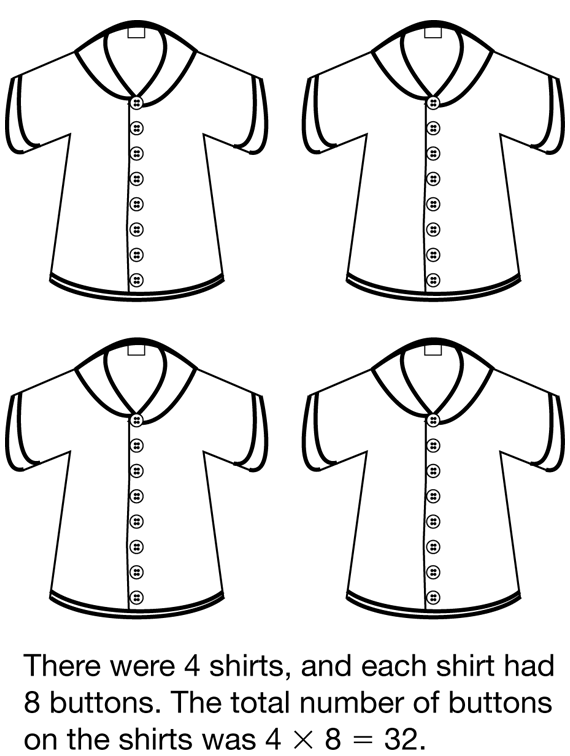More Multiplication Stories
Est. Class Sessions: 2Developing the Lesson
Part 1. Writing Multiplication Stories
Multiply One-Digit by One-Digit Numbers. To begin, display a one-digit by one-digit multiplication problem, e.g., 4 × 8, and ask students to write and illustrate a story to represent it. Students should be familiar with this type of task as they did this in the Multiplication Stories lesson in Unit 3 Exploring Multiplication and in DPP items in Units 3–8. See Figure 1 for a sample story for 4 × 8.
Multiply One-Digit by Two-Digit Numbers. Next, display a one-digit by two-digit problem, e.g., 4 × 26, and ask students to write a story for it. These stories may be similar to the first ones, except for the size of the numbers. Ask students to illustrate their stories and to solve the multiplication problem. Encourage them to think of their own solution methods.
As students are working, circulate around the room and look for different solution strategies and methods.
Make note of the methods students are using so that later you can select volunteers who will share varied solution strategies. In addition to other strategies, look for methods that break numbers apart, and more specifically, one that breaks numbers into tens and ones.
When they have completed their stories and solved the multiplication problem, select several students to share their solution methods with the class. For example:
- 4 × 26 is 26 + 26 + 26 + 26. I'll break apart each 26 to get 20 + 20 + 20 + 20 + 6 + 6 + 6 + 6. Then, I add 80 + 24 = 104.
- 26 is 25 + 1. First I will find 4 × 25. I know that 2 × 25 = 50, so I double that to get 4 × 25 = 100. Then I add 4 × 1 and get 104.
- If I think about money, 26¢ is 25¢ + 1¢. I know that 4 quarters are $1.00 and that 4 pennies are 4¢. So, 4 × 26¢ is $1.04. That is the same as 104¢, so 4 × 26 = 104.
- 4 × 26 = 4 × 10 + 4 × 10 + 4 × 6
= 40 + 40 + 24
= 104 (See Figure 2.)
- 4 × 26 = 4 × 20 + 4 × 6
= 80 + 24
= 104
Ask questions that compare the solution methods:















